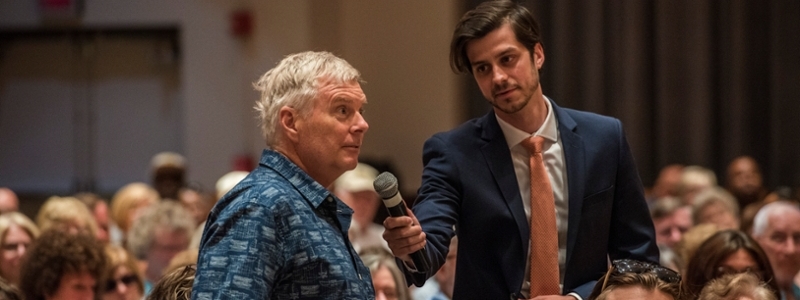Best Practices for Town Hall Meetings
/https://siu.edu/search-results.php
Last Updated: Aug 08, 2025, 01:14 PM
 Best Practices for Town Hall Meetings
Best Practices for Town Hall Meetings
The Paul Simon Public Policy Institute, working with the Richard Lugar Center in Washington, D.C, has developed a set of best practices for the conduct of congressional town hall meetings. These recommendations were sent to the Illinois congressional delegation in the summer of 2018 and shared with the public. They reflect Paul Simon’s idealism and transparency and will hopefully encourage more civility and respect in our public discourse.
Town Hall Best Practices (Download PDF)
The Lugar Center has said they would like to use the Paul Simon Public Policy Institute’s proposal to serve as the basis for a national town hall project.
The Institute believes that congressional town hall meetings have been an important feature of America’s culture of representative democracy for more than two centuries. In their ideal form, town hall meetings allow lawmakers to describe their work at home and in Washington and to listen to the concerns of their constituents. Open and vigorous dialogue benefits policymakers and the public.
Senator Paul Simon, an iconic leader in Illinois and Washington, D.C. for nearly four decades, often said that town hall meetings were a critical aspect of his public service. “Perhaps as important as any specific thing you learn, people understand that government is not some distant creature, that they can express their opinions, ask questions, let people in positions of decision-making know what’s on their minds,” Simon wrote. “But it is more than that. For me, it is a chance to sense what people feel. To best serve the people of Illinois, I should not be sitting in Washington simply listening to what the highly paid lobbyists have to say. I need to touch the public pulse, to sense the public mood.”
The nature of the town hall meeting has changed dramatically in the last decade or so, driven by deepening political polarization and advances in technology, especially the revolution in social media. Many in Congress now hold only “virtual” town hall meetings in which constituents attend via phone or internet. These meetings are often tightly controlled and only fuel public anger and skepticism about the political process.
The Paul Simon Public Policy Institute believes that in-person town hall meetings can remain a constructive part of our political discourse. However, we urge lawmakers and the public to approach them differently going forward. Respectful discussion cannot be mandated but can be encouraged. Civility should be the coin of the realm in town hall meetings.
The Paul Simon Institute has developed a package of recommendations on how to rescue and revive town hall meetings which we have shared with Illinois’s congressional delegation.
Recommendations
- Recast the structure of town hall meetings as listening and learning sessions that focus on lawmakers hearing the views and concerns of constituents. Find creative ways to configure the room so the meeting does not have an adversarial feel or a “sage on stage” appearance. It’s better for the lawmaker to sit on a chair or at a table rather than stand behind a podium.
- Town hall meetings should be moderated by a non-partisan community leader who explains the guidelines of the session and sets the tone for a respectful discussion.
- Limit the policymaker’s opening statement to no more than ten minutes and reserve the vast majority of time for questions and comments from the audience. Have participants identify themselves and present a brief question or statement. Strongly stated opinions are appropriate; rudeness or badgering is not.
- Undertake aggressive efforts to expand the range of people who attend town halls so the audience is more diverse and includes both partisans and independents. Most Americans reside in the center of the ideological spectrum and analysts agree this vast group is now significantly underrepresented at town hall meetings.
- Open all town hall meetings to the public and media and stream the event live if possible. At a minimum, make a video recording of each meeting and put it on the policymaker’s website to allow constituents who are unable to attend to view the entire event.